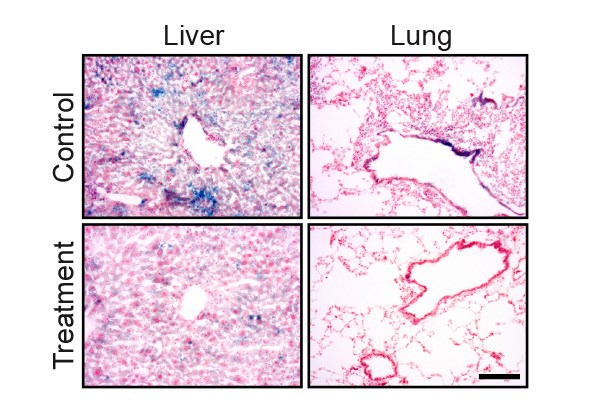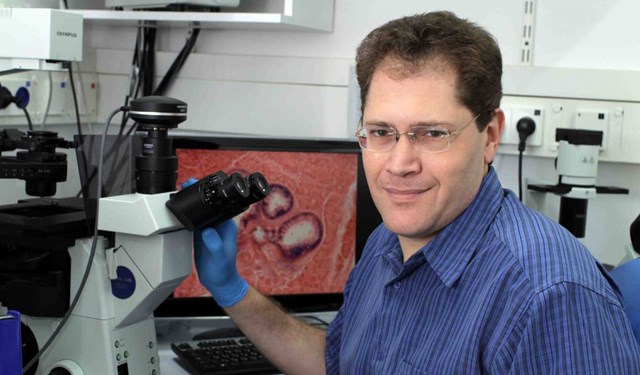 Drug treatment eliminates senescent cells from tissues of old mice. The blue staining shows senescent cells in lung and liver tissue. The amount of the staining is significantly reduced following the drug treatment
Drug treatment eliminates senescent cells from tissues of old mice. The blue staining shows senescent cells in lung and liver tissue. The amount of the staining is significantly reduced following the drug treatment
If only we could keep our bodies young, healthy, and energetic, even as we attain the wisdom of our years. New research at the Weizmann Institute of Science suggests this dream could be at least partly obtainable in the future. The results of this research, led by Prof. Valery Krizhanovsky and Dr. Yossi Ovadya in the Department of Molecular Cell Biology, were recently published in Nature Communications.
The research began with an investigation into the way that the immune system is involved in a crucial activity: clearing away old, senescent cells that spell trouble for the body when they hang around. Senescent cells – not completely dead but suffering loss of function or irreparable damage – have been implicated in age-related diseases by promoting inflammation. The researchers used mice in which a crucial gene for this immune activity was missing. At two years of age (elderly, for mice), the bodies of these mice had a greater accumulation of senescent cells compared with the mice in which the gene for removing these cells was intact. The mice missing the gene suffered from chronic inflammation, and various functions in their bodies appeared to be diminished. They also looked older – and died earlier – than their normal counterparts.
Next, the researchers gave the mice a drug that inhibits the function of certain proteins that help the aging cells survive in their senescent state, to see if this would contribute to the removal of these cells from the body. The drugs were administered to mice whose aging was a result of the malfunctions the group had uncovered in the immune system, as well as those suffering premature aging from a different genetic error. The treated mice responded exceptionally well to the drug: their blood tests and activity tests showed improvement, and their tissues appeared to be much closer to those of young mice. The scientists counted senescent cells, finding many fewer of them remaining in the treated mice’s bodies; and when they looked for signs of inflammation, they found that this, too, was significantly lower. The mice treated with the drug were more active and their median lifespan rose.

Prof. Valery Krizhanovsky
The scientists intend to continue exploring ways to prompt the human body to remove its old senescent cells, particularly seeking means of activating the immune system to do this job. In other words, if future experimentation proves their theories correct, they could end up creating truly anti-aging therapies.
Prof. Valery Krizhanovsky’s research is supported by the Ilse Katz Institute for Material Sciences and Magnetic Resonance Research; the Rising Tide Foundation; the Quinquin Foundation; Mr. and Mrs. Bruce Kanter; the Soref New Scientists Start-Up Fund; and the European Research Council.
